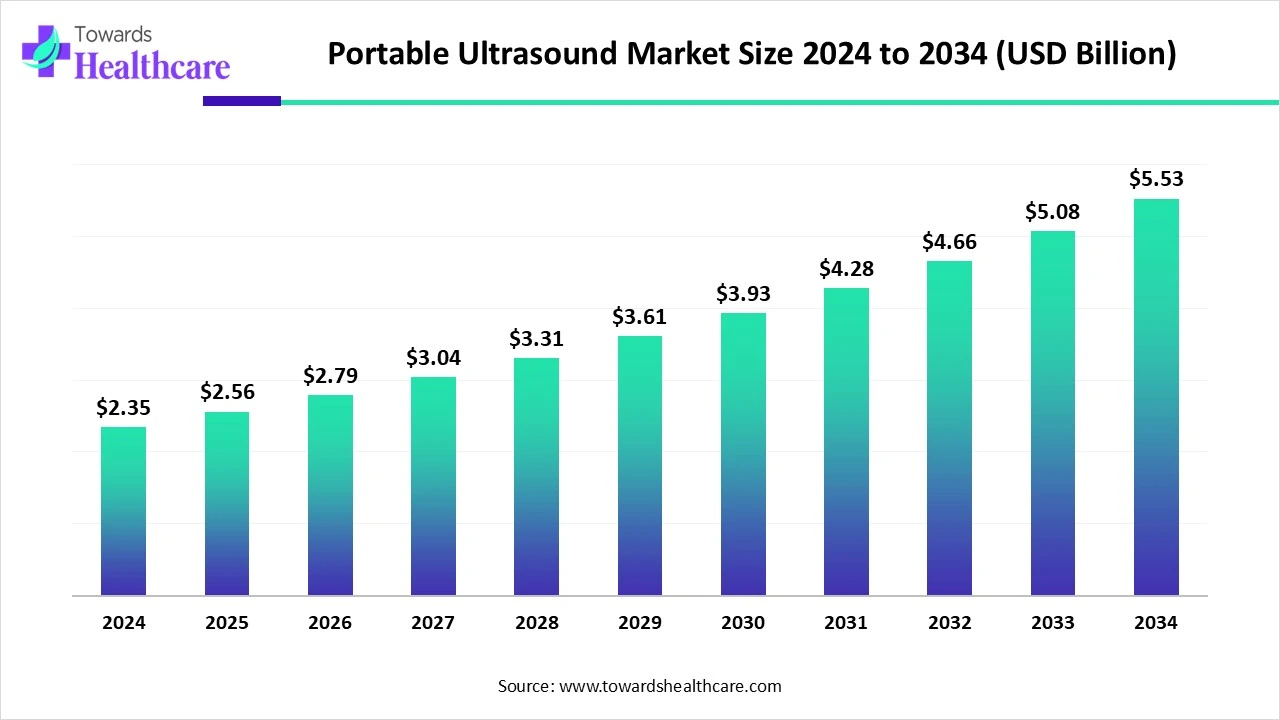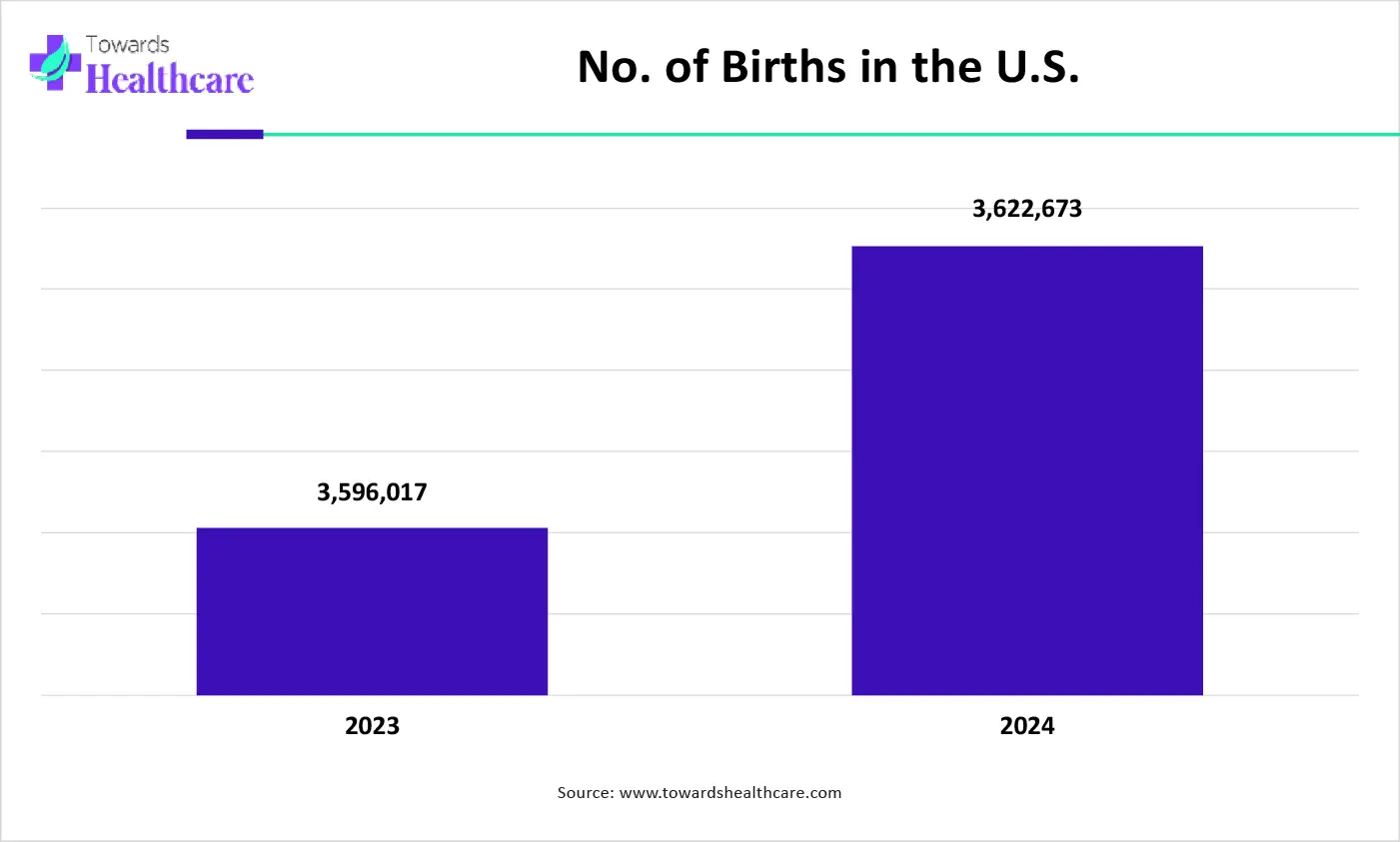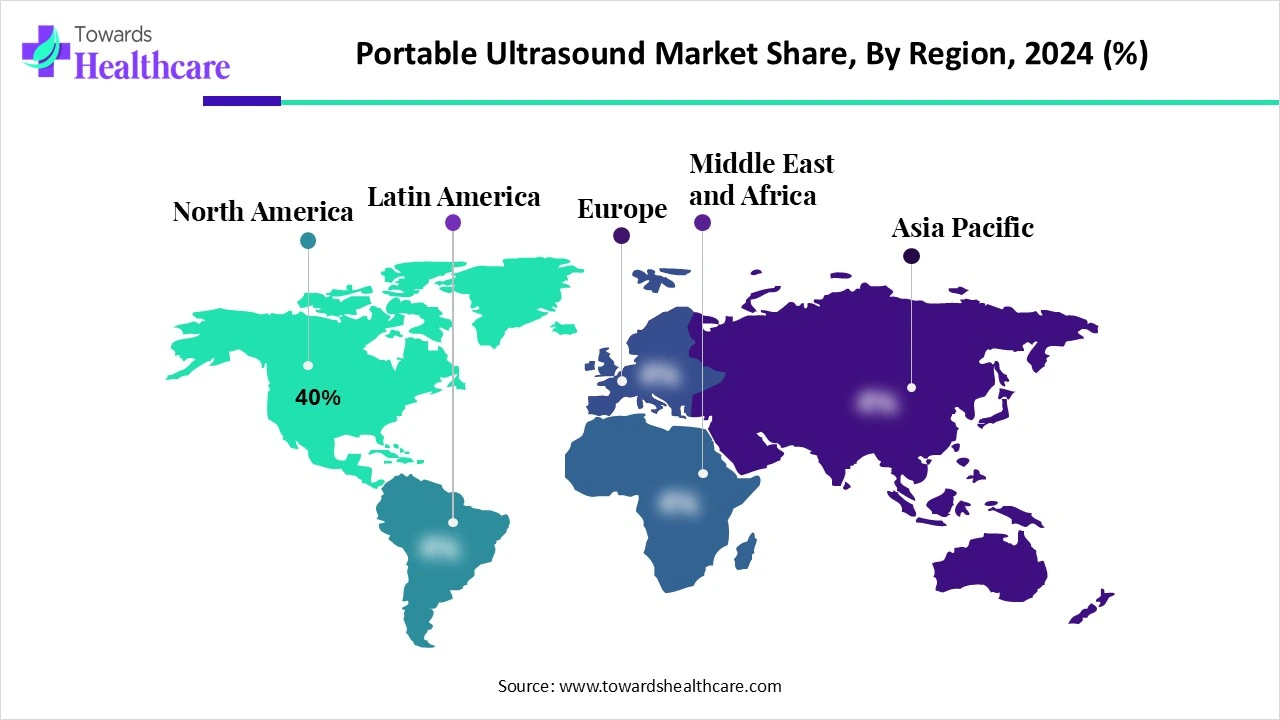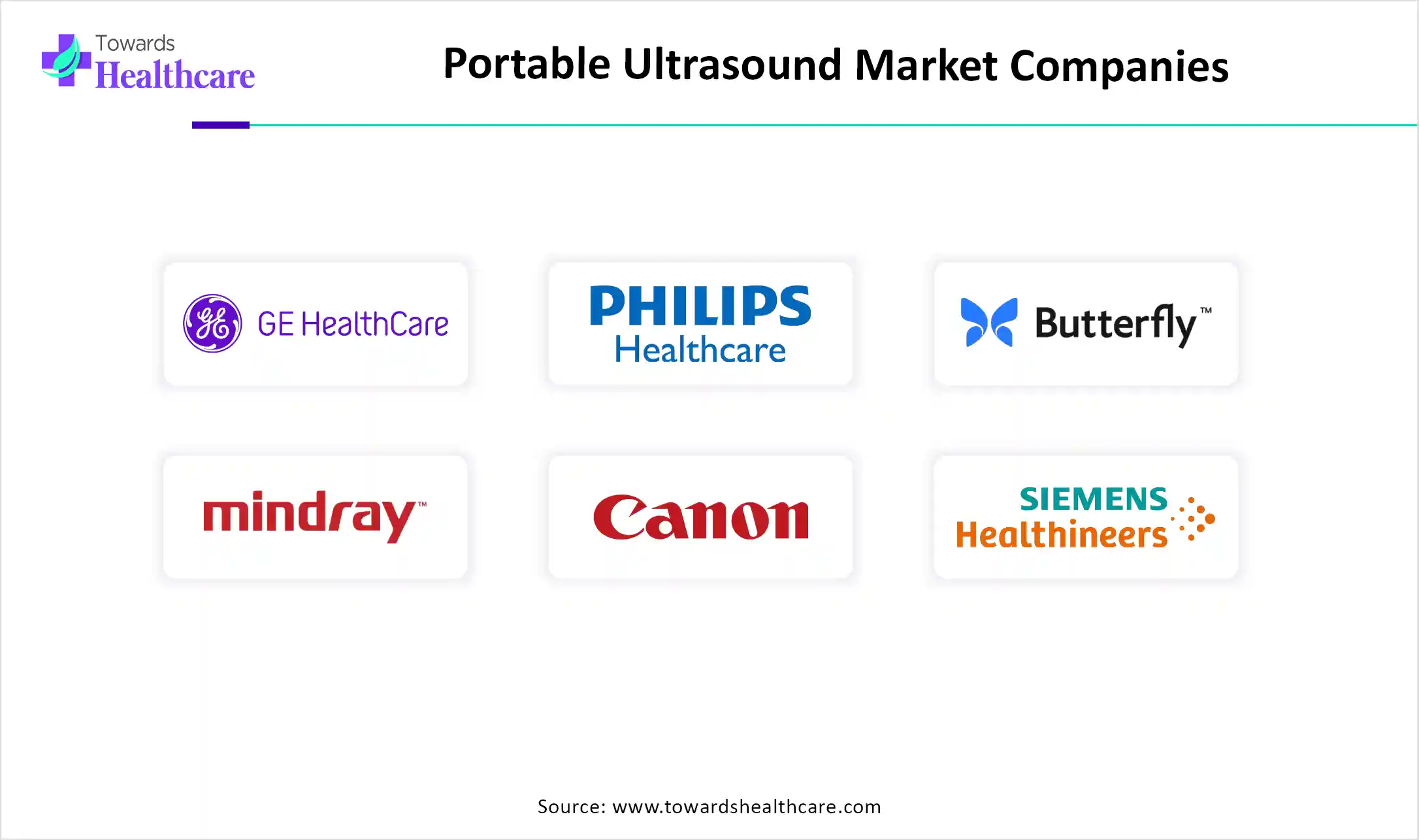December 2025

The global portable ultrasound market size touched US$ 2.35 billion in 2024, with expectations of climbing to US$ 2.56 billion in 2025 and hitting US$ 5.53 billion by 2034, driven by a CAGR of 8.94% over the forecast period.

The demand for portable ultrasound is increasing due to the growing need for faster diagnosis. This is increasing their development along with the use of AI to enhance their image qualities, workflow, and accessibility. These developments are being supported by grants or funding from different companies. The companies are collaborating, developing, and launching their new portable ultrasound devices. Due to the advanced healthcare sector, growing awareness, and demand for point-of-care imaging, its adoption in different regions is increasing. Thus, this is promoting the market growth.
| Table | Scope |
| Market Size in 2025 | USD 2.56 Billion |
| Projected Market Size in 2034 | USD 5.53 Billion |
| CAGR (2025 - 2034) | 8.94% |
| Leading Region | North America Share 40% |
| Market Segmentation | By Product Type, By Application, By Technology, By End User, By Region |
| Top Key Players | GE HealthCare, Philips Healthcare, Butterfly Network, Inc., Fujifilm Sonosite, Inc., Mindray Medical International Ltd., Canon Medical Systems Corporation, Samsung Medison, Esaote S.p.A., Clarius Mobile Health Corp., Healcerion Co., Ltd., Siemens Healthineers, Terason (Teratech Corporation), EDAN Instruments, Inc., Chison Medical Technologies Co., Ltd., Shenzhen Mindray Bio-Medical Electronics, Konica Minolta Healthcare Americas, Inc., Beijing Konted Medical Technology Co., Ltd., KOELIS SAS, Biosound Esaote Inc., ZONARE Medical Systems |
The portable ultrasound market encompasses compact, mobile ultrasound systems designed for point-of-care diagnostics, emergency medicine, outpatient clinics, remote healthcare, and home use. These devices offer real-time imaging, are increasingly battery-operated and wireless, and are used across cardiology, obstetrics, urology, musculoskeletal, and critical care applications. The market is driven by growing demand for decentralized diagnostics, telemedicine integration, and advancements in AI-enabled and handheld ultrasound technologies that enhance accessibility and affordability.
Growing innovations and funding: The growing research and development are increasing the number of innovations in portable ultrasound devices. This is driving the development of various smart, wearable, small, wireless, etc devices. These innovations are being supported by funding, which is accelerating their development.
For instance,
AI provides various applications in portable ultrasound devices. It provides automated image interpretation at faster rates. It can be used to detect various abnormalities, such as cysts, tumors, etc., as well as can also provide on-screen guidance. At the same time, it can also enhance the image quality. Moreover, it can provide the details of the fetal size, along with organ dimensions. Furthermore, as it offers scanning guidance, it can be used by anyone, making its use easier. It can also provide automated reports.
Growing Homecare
The growing shift toward care is increasing the demand for non-invasive, portable ultrasound devices. These are being used for early detection, monitoring, and management of various chronic diseases. This, in turn, is increasing the development of patient-centered models. At the same time, innovations are being conducted to develop systems that can be used by the nurses and patients. Moreover, the growing telemedicine is also increasing its adoption for remote consultations. Thus, these developments are driving the portable ultrasound market growth.
Lack of Image Quality
The portable ultrasound devices show poor image resolution. This can lead to misinterpretation of the data. This, in turn, reduces their use along with their adoption in hospitals for diagnosing complex conditions. Thus, this limits their use in clinical applications.
Advancements in Handheld Ultrasound Devices
The use of handheld ultrasound devices is increasing as they are small and compact. This, in turn, is driving their innovation. Developments are being made for integrating them with telemedicine. This will promote their use in home healthcare settings, making them user-friendly. At the same time, their battery life is being expanded to enhance their use. Similarly, wireless battery charging systems are also being incorporated to promote their use in emergency situations. Thus, these advancements are enhancing the portable ultrasound market growth.
For instance,
By product type, the cart-based portable ultrasound systems segment held the largest share of approximately 47% in the market in 2024. Due to their better image quality, they were used in various departments. Moreover, their enhanced battery life and easy use enhanced their utilization. This contributed to the market growth.
By product type, the handheld ultrasound devices segment is expected to show the highest growth at a notable CAGR during the predicted time. These devices are small, compact, and lightweight. This is increasing their use in remote diagnosis. Moreover, their affordability is also enhancing their adoption.
By application type, the obstetrics & gynecology segment led the market with approximately 34% share in 2024. Portable ultrasound was used for monitoring fetal development. They were the preferred choice due to their non-invasive approach. Furthermore, the growing awareness also increased their demand for prenatal care.

The graph represents the total number of births observed in the U.S. in the years 2023 and 2024. It indicates that there will be a rise in the number of births. Hence, it increases the demand for new portable ultrasound devices for the obstetrics & gynecology applications. Thus, this in turn will ultimately promote the market growth.
By application type, the emergency medicine/critical care segment is expected to show the highest growth during the upcoming years. The portable ultrasound is being used for these applications to provide faster imaging and decisions. They are being used to identify any complex conditions. Their portability is enhancing their use in remote areas.
By technology type, the 2D ultrasound imaging segment held the dominating share of the market in 2024. They were used for routine clinical checkups. Moreover, due to their affordability and fast imaging, their use increased. This promoted the market growth.
By technology type, the AI-powered ultrasound imaging segment is expected to show the fastest growth during the predicted time. They provide enhanced image qualities. Furthermore, their automated workflow accelerates the diagnosis process. Thus, it can be used by non-trained personnel as well.
By end user, the hospitals and clinics segment led the global market with an approximately 51% share in 2024. A large number of patients are diagnosed by them. This increases the use of portable ultrasound devices in various departments and applications. The presence of skilled personnel enhanced their use.
By end user, the home healthcare & telemedicine settings segment is expected to show the fastest growth during the upcoming years. The use of portable ultrasound devices in these settings is increasing for monitoring and management of diseases at home. Moreover, their easy use and integration with apps is also contributing to the same. This is enhancing patient comfort as it reduces the number of hospital visits.

North America dominated the portable ultrasound market share by 40% in 2024. The healthcare infrastructure in North America is well-developed, along with the presence of advanced technologies. They used portable ultrasound devices in various point-of-care settings. This contributed to the market growth.
The healthcare sector in the U.S. is increasingly adopting portable devices. This is increasing their use across various settings. At the same time, it is also utilizing AI technologies for innovating smart devices. These adoptions and developments are supported by the healthcare investments.
The industries and institutions in Canada are innovating new portable ultrasound devices. They are provided with grants or funding, accelerating their development. They are also developing these devices to support the point-of-care and emergency services. Moreover, the use of advanced technologies is promoting remote patient monitoring.
Asia Pacific is expected to host the fastest-growing portable ultrasound market during the forecast period. The increasing maternal care programs in the Asia Pacific are increasing the awareness and the demand for the use of portable ultrasound devices. This is increasing their utilization. Thus, this enhances the market growth.
The increasing diseases in China is increasing the use and adoption of portable ultrasound devices. These are being used for the detection and monitoring of various conditions. At the same time, they are focusing on developing app-based, mobile-compatible devices. Thus, they are also focusing on making them more affordable.
The increasing awareness about maternal health is increasing the adoption of portable ultrasound devices in India. This, in turn, is being developed at affordable prices. The growing medical tourism is also increasing its use. Moreover, the support from NGOs and governments is encouraging their adoption.
Europe is expected to grow significantly in the portable ultrasound market during the forecast period. The demand for point-of-care imaging for emergency departments, ambulances, and home care is increasing in Europe. This is increasing the demand for portable ultrasound. Thus, this promotes the market growth.
The presence of a well-developed healthcare system in Germany is increasing the use of portable ultrasound for a wide range of diagnostic applications. At the same time, the increasing rates of an aging population are increasing their use. Their use in non-hospital settings is also growing.
The increasing telemedicine trend in the UK is increasing the demand for portable ultrasounds. This is driving the development of small, compact, and affordable portable imaging devices. This, in turn, is leading to new collaborations among the companies. Furthermore, these developments are supported by the regulatory bodies' investment.

In April 2025, after launching the Elevate Platform upgrade on the EPIQ Elite ultrasound imaging platform by Royal Philips, the head of ultrasound, Sachin Grover, stated that they were gratified with this launch in India. They have a rich legacy of improving diagnostic confidence and patient outcomes by providing intelligent workflow solutions. Thus, with the rising challenges and patient volumes, the launch of Elevate highlights their commitment to helping healthcare providers.
It helps the clinician to deliver high-quality care more efficiently, with greater clinical precision, smarter automation, and faster diagnostics. Thus, to make healthcare more accessible, inclusive, and effective by providing better care for people, they believe in the transformative potential of artificial intelligence.
By Product Type
By Application
By Technology
By End User
By Region
December 2025
December 2025
December 2025
December 2025